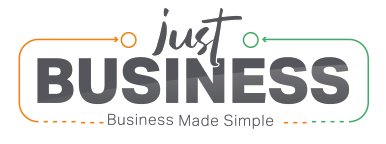In the world of finance, flexibility is often a crucial factor in ensuring business success and growth. When it comes to addressing immediate financial needs, bridging finance has long been a popular choice.
However, it’s important to recognize that there are several alternatives to bridging finance that offer unique benefits and can better suit specific situations.
In this article, we will delve into the world of short-term funding and explore the various options available beyond traditional bridging finance.
Understanding Bridging Finance
Bridging finance is a short-term loan option that is typically used to ‘bridge’ the gap between borrowers’ immediate cash needs and a more permanent source of financing, such as a mortgage or a business loan.
It is commonly utilized in real estate transactions, where timing is critical, or by businesses requiring fast access to funds for expansion, inventory purchases, or operational needs.
While bridging finance offers speed and flexibility, it often comes with higher interest rates and fees due to its short-term nature.
Exploring Alternatives
Peer-to-Peer Lending
Peer-to-peer (P2P) lending platforms have gained popularity as an alternative to traditional financing. These platforms connect individual investors with borrowers, cutting out the intermediaries like banks.
P2P lending offers competitive interest rates and a streamlined application process. However, securing funds may take longer than bridging finance, and approval depends on the platform’s assessment of the borrower’s creditworthiness.
Invoice Financing
For businesses facing cash flow issues due to delayed payments, invoice financing provides a practical solution. This method involves selling unpaid invoices to a financing company at a discount.
The financing company advances a percentage of the invoice value upfront and collects the full payment from the client later.
Invoice financing allows businesses to access the funds they’re owed without waiting for the typical payment terms.
Business Lines of Credit
A business line of credit is a flexible funding option that provides access to a predetermined credit limit.
Similar to a credit card, businesses can withdraw funds as needed, and interest is only paid on the amount borrowed.
This alternative is suitable for covering short-term expenses and managing cash flow fluctuations.
While it may not provide the immediate lump sum of bridging finance, it offers ongoing access to funds without the need to reapply for a loan each time.
Asset-Based Lending
Asset-based lending allows businesses to secure a loan using their assets, such as inventory, equipment, or accounts receivable, as collateral.
The loan amount is determined by the value of the assets, and interest rates are generally lower compared to bridging finance.
This option can be advantageous for businesses with valuable assets looking for short-term financing without the high costs associated with traditional bridging loans.
Short-Term Business Loans
Unlike bridging finance, which is often secured against property, short-term business loans can be secured or unsecured and are specifically designed to meet short-term funding needs.
These loans typically have a fixed repayment period and offer a lump sum upfront, making them suitable for various business purposes, from covering operational expenses to seizing growth opportunities.
Microloans
Microloans are small loans provided by microfinance institutions or online lenders. These loans are particularly beneficial for startups, small businesses, or entrepreneurs who need modest amounts of funding for specific projects or purchases.
Microloans often come with reasonable interest rates and flexible repayment terms, making them a viable alternative to bridging finance, especially for those who do not require a large sum of money.
Crowdfunding
In recent years, crowdfunding has emerged as a creative way for individuals and businesses to raise funds. Crowdfunding platforms allow entrepreneurs to present their projects or business ideas to a broad audience, seeking small contributions from many backers.
While this approach may not be suitable for immediate financial needs, it can be an effective way to generate funds for unique ventures without taking on traditional debt.
Vendor Financing
Vendor financing, also known as supplier financing, involves negotiating extended payment terms with suppliers. This can provide businesses with more time to generate revenue from their purchases before making full payments.
While not a direct loan option, vendor financing effectively improves cash flow without incurring additional debt.
The Criteria for Choosing the Right Alternative
When considering alternatives to bridging loan, it’s essential to assess each option against specific criteria to determine which best fits the financial situation at hand. Here are some factors to consider:
Urgency of Funds
If immediate access to funds is crucial, options like bridging finance or short-term business loans might be more suitable due to their faster approval and disbursement process.
On the other hand, crowdfunding and peer-to-peer lending may take longer to gather the required funds.
Cost of Financing
Different financing options come with varying costs, including interest rates, fees, and potential discounts. It’s important to compare the overall cost of each alternative and evaluate whether the benefits outweigh the expenses.
Short-term business loans and vendor financing often have competitive interest rates, while crowdfunding may not involve direct interest but could require giving up equity or rewards to backers.
Collateral and Creditworthiness
Bridging finance may be secured against property, making it suitable for those with valuable assets but potentially risky for those without collateral.
Alternatives like microloans and peer-to-peer lending might be more accessible for borrowers with limited collateral or credit history. Asset-based lending, as the name suggests, requires valuable assets to secure the loan.
Repayment Flexibility
Consider the repayment terms offered by each financing option. Business lines of credit provide ongoing access to funds and allow businesses to repay and borrow as needed within the credit limit.
Invoice financing and short-term business loans usually have fixed repayment periods, while crowdfunding contributions are often a one-time transaction.
Use of Funds
Clearly define the purpose of the funds. Are they needed for inventory, expansion, operations, or a specific project? This can help narrow down the options that align with the intended use of the funds.
For example, vendor financing might be ideal if the funds are primarily for inventory purchases.
Risk Tolerance
Every financing option comes with its own set of risks. Traditional financing like bridging loans can have higher interest rates, while crowdfunding and microloans involve some degree of uncertainty in reaching funding goals.
Assess the risk tolerance of the business or individual and choose an option that matches their comfort level.
Long-Term Impact
Consider the long-term impact of the chosen financing option on the business or individual. Will the chosen alternative help achieve long-term goals, or is it a temporary fix?
If the funds are needed for a one-time project, options like microloans or crowdfunding might be more appropriate. If it’s for ongoing operational needs, a business line of credit could be beneficial.
Conclusion
Bridging finance undoubtedly serves as a reliable solution for urgent financial needs. However, it’s essential to recognize that it’s not the only option available.
Depending on the specific circumstances and financial requirements, alternatives such as peer-to-peer lending, invoice financing, business lines of credit, asset-based lending, short-term business loans, microloans, crowdfunding, and vendor financing offer diverse benefits and flexibility.
As businesses and individuals navigate the complex landscape of short-term funding, understanding these alternatives and their potential advantages can empower them to make informed decisions that align with their financial goals.
Whether it’s seizing a growth opportunity, managing cash flow, or funding a creative project, exploring the variety of options beyond bridging finance ensures that the chosen financing method is tailored to the unique needs of the borrower.

